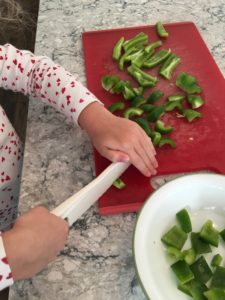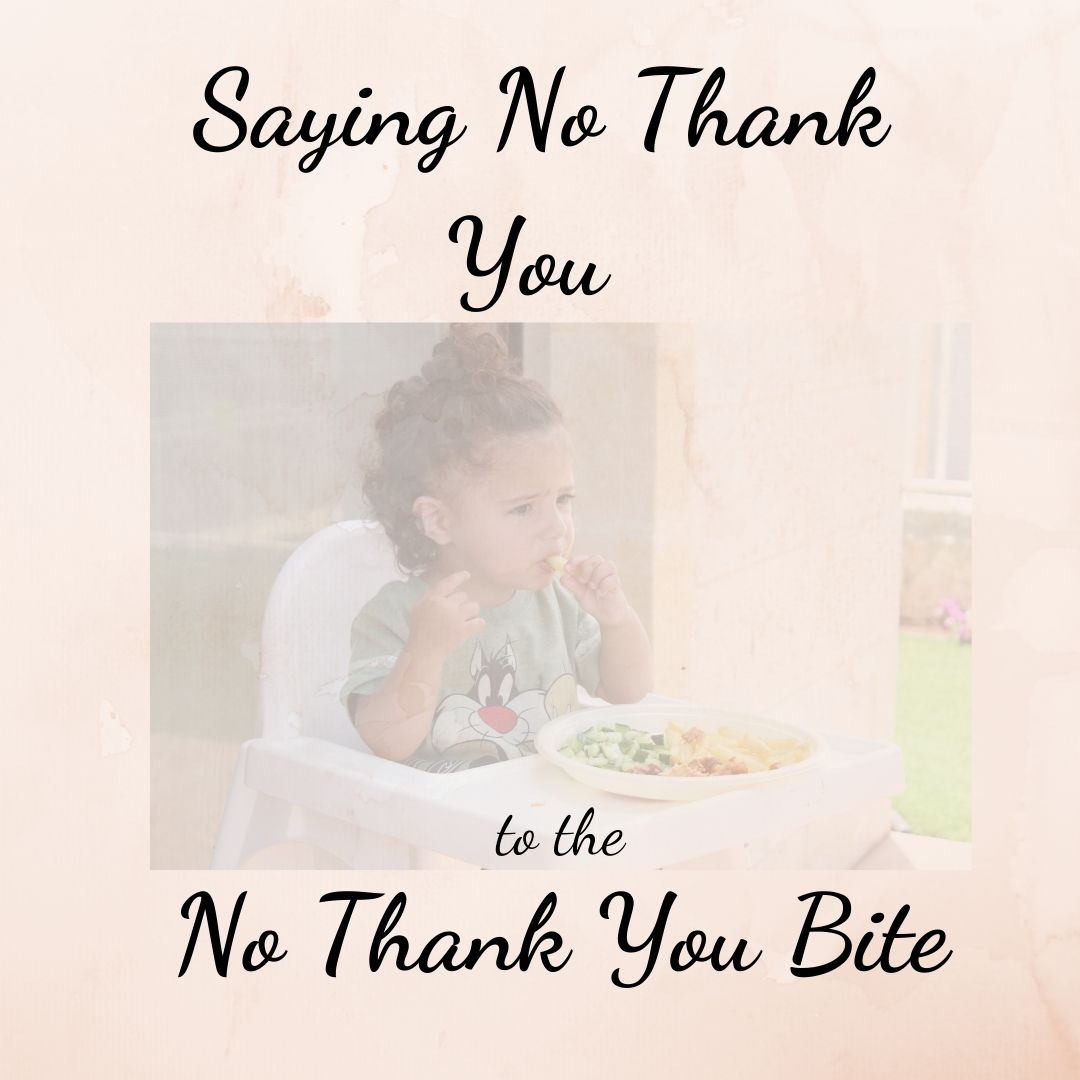A few days ago I saw an Instagram post of a preschooler’s lunch. The lunch included cherry tomatoes, blueberries, hard boiled eggs, and whole wheat crackers. It was a gorgeous meal. There were also images of the child eating all the foods that were in the lunch. And I had pang of jealousy because I knew my kid wouldn’t touch a meal like that with a 10 foot pole….
Before this journey of motherhood, I naively thought that my education prepared me to raise a healthy and adventurous eater. I am instead, dealing with a picky eater and crumbled pile of lies that are my former thoughts on child eating. I know I’m not the only mother who has dealt with this, so I’m writing this confession in an effort to find support. I also do believe that some of the things I learned about eating and childhood will work with some children. It just didn’t work on Little Bit.
1. Give a child two healthy options and allow him/her to pick one. It will allow for a child to feel as though s/he has control over what is eaten.
Control over eating, or lack thereof, is huge in the world of nutrition. Eating, or not eating is one of the few things in life that a person has complete autonomy. Sometimes when people feel like life is spinning out of control, they seek to regain some measure of it by changing their eating habits. We see this lack of control manifest itself in various ways that can include eating disorders, food battles with kids, and even severely ill people developing odd eating habits.
Children, for safety reasons, do not have much control over their lives. Parents decide what is eaten, what clothes are worn, what is watched on TV, and the list goes on and on. Teachers make all the the rules in school. Coaches make the rules on the field. See where I am going? Refusing to eat a meal is a simple way that a child feels like s/he has some measure of control.
In school we were taught to not always fight this desire for control, but instead, if appropriate, allow a child to choose what to eat by offering two parent-approved options. In my house, I make one dinner. I’m too tired at the end of the day to be a short-order cook. But when Little Bit was 20 months old, and first starting to become opinionated about her food, I was able to try this technique for lunch.
This is how our conversations went (remember, she was 20 months so we have been in this battle for a LONG time):
I would ask, “Would you like scrambled eggs and blueberries or a peanut butter & jelly sandwich with blueberries for lunch?” She would stop and deeply ponder her choices before responding, “Pizza.” I would say, “No, I didn’t say pizza,” and repeat the two options. She would again stop, think, and slowly respond, “Mac ‘n cheese.” At this point, I would give up and just make a lunch. She was still sitting in a high chair, so I would put the lunch in front of her, and she would proceed to burst into tears and the fit would commence. It was around this time that my Bible study leader, who was a grandmother by the time I met her, gave me some of the best parenting advice I have ever received. She said, “Take away the audience.” I started doing just that, and would put Little Bit’s lunch down, she would start to cry, I would say nothing, and calmly leave the room. Once I was out of sight and she realized that a fit wasn’t going to accomplish anything, she would eat. She was hungry and she did actually like the foods I served.
2. Keep exposing a child to a food and eventually they will accept it.
Exposure to a food encompasses seeing, touching, smelling, and tasting a food. Because eating does involve so many of the senses, it is not uncommon for a child to not necessarily taste a food the first time it is set on a plate. I learned it can take 15-20 exposures to a food for a child to accept it. What my picky eater has taught me, is that it is NOT 15-20 exposures, it is 15-20 consumed bites of food before we even get close to acceptance.
I also thought acceptance meant liking a food. Acceptance in our house means eating 1-3 bites of a food with minimal resistance or gagging. For some kids, acceptance may mean liking, but not for mine. However, that does not stop me. I keep putting those foods on her plate and keep having her try them. I’m hoping that one day, 20 years from now, I will be able to say that my adult child is not in fact a picky adult eater. Stay tuned……
3. Get your child to help with cooking and they will want to eat the food.
Eating does involve multiple senses. When a child helps to prepare a meal it allows plenty of touch of the food, which improves texture acceptance. Helping in meal preparation also helps kids understand the meals origins and removes the uncertainty of newness. Think about it for a minute, do you ever have uncertainty about a new experience? Does the unknown make you a bit apprehensive? The same can be true with new foods for kids. Meal preparation can be a stepping stone to food acceptance.

Green peppers are one of the foods we have reached acceptance with, or so I thought. We eat them often (usually cooked) and Little Bit knows she must have at least one bite. However, as she was chopping, right before I snapped this pic, she said, “I can’t eat these. They make me gag.” So here again, something I was taught would help with the food battles and kids, and it is not working as intended.
For the record, she did a bit of green pepper with this meal.
Recall the advice I was given about removing the audience? I use the same technique for the theatrics and gagging at this stage of the game.

Helping with meal preparation may not have relieved my struggles with picky eating, but I still get Little Bit in the kitchen with me as much as possible. Basic cooking is a life skill that I’m disturbed to see dying. I cannot tell you the number of individuals I have encountered through the years who have been hindered by this fact. It negatively impacts both health and budgets. Now, I’m not talking about being an award winning chef here, I’m talking about just being able to follow a recipe. So I keep bringing my kiddo in the kitchen, keep exposing her to new foods, and keep working to acceptance.
While these are some my challenges with a picky eater, there are a few things I learned about childhood eating that have helped me as a mom, but that is another blog post. No amount of education, research, or training can prepare you for the unique individual you will get with each and every child. I am a firm believer that we must choose our battles with our kids, and I do want to encourage you to keep fighting the battle to help your kid have an adventurous palate and, most importantly, a healthy relationship with food and eating.




